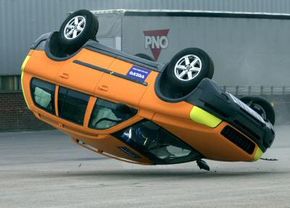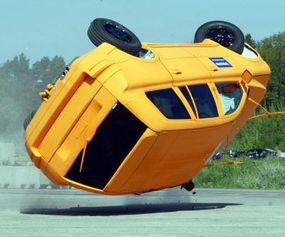By far the deadliest risk facing SUV, minivan, and truck occupants is a rollover accident. According to NHTSA (National Highway Traffic Safety Administration), more than 280,000 rollover accidents are reported each year, claiming more than 10,000 lives annually.
In 2003, 35.7 percent of fatal SUV crashes resulted in a rollover. That same year just 15.8 of fatal passenger car accidents resulted in a rollover. What this statistic points out is the fact that SUVs are much more likely to rollover in a serious accidents. Compounding the issue is the fact that SUVs often carry heavy loads with make them even more top-heavy and thus are more likely to be involved in rollover accidents.
Advertisement

